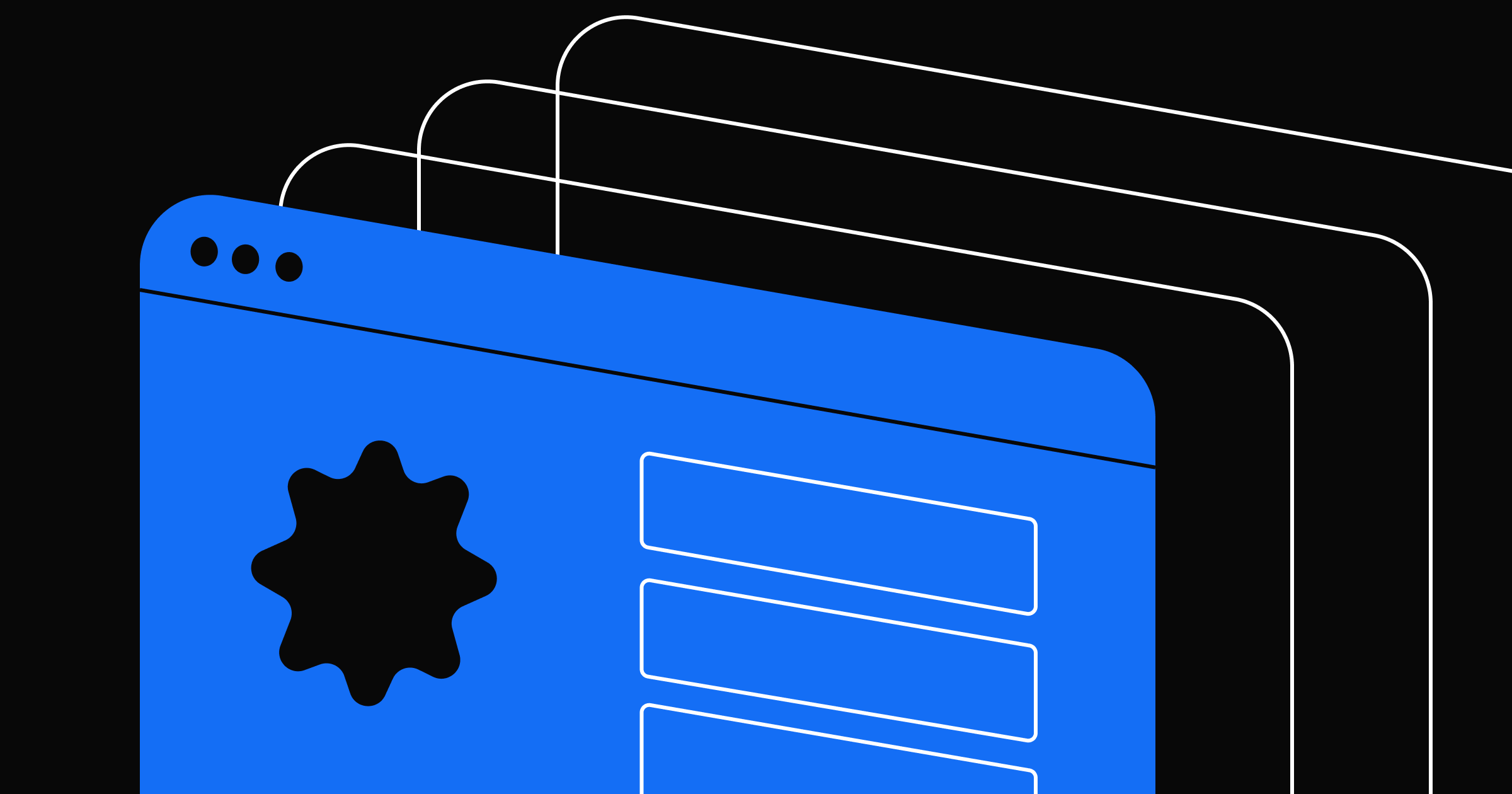More people will encounter your brand digitally than they ever will physically.
Your website is where you connect with your audience, where you communicate your brand identity, and where you convert visitors into loyal customers. Within the day-to-day of your company, your website is also one of your biggest collaborative projects.
Because it connects your business directly to your customers, your website is also the biggest asset your marketing team has at its disposal. Engineering, product, copywriting, and design teams will all contribute to its development as well. The tools your business chooses to develop your website will influence how effectively those teams work together.
The content management system (CMS) your site is set up on has the biggest impact on the quality of your website. At its simplest, a CMS can be defined as the tool that connects your content to your design — but that doesn’t tell the whole story. The true power of a CMS is the way it provides a toolbox to your teams that empowers them to connect to your customers in the most effective, responsive, and forward-thinking way possible.
The elements of a high-quality enterprise website
To understand how a CMS impacts the quality of your website, we first need to establish what makes an enterprise website powerful. Websites have become much more than just static client-facing pages. A good website needs to serve both the needs of your customers and the needs of your team.
Great design
Good web design is beautiful, easy to use, and communicates your brand to your target audience. Design is what catches the eye. It inspires engagement and curiosity, motivating visitors to venture further into your site. It establishes brand values, voice, and identity. Great design makes sure your website is accessible for everyone who needs to use it and ensures visitors can easily connect to what they need.
Great content populating that design
Design brings customers into your site, and the value of your content keeps them there. Your CMS populates your web design with the content that you need to deliver to your customers. With so much content living on your site, that content needs to be organized and managed effectively.
Content is how you describe your business visually or through words. It could be as complex as a detailed article about your business or as simple as an image that’s intended to evoke what your brand is.
Great content communicates your brand clearly, engages customers’ curiosity, and offers something of value to visitors. Great content also needs to be accessible — meaning it loads on all devices, it loads quickly, and it comes in a format that all customers can access, including those with specific accessibility needs.
Customer responsiveness
A good website is able to constantly improve and develop to meet the needs of your customers — it cannot be static. It needs to grow to hold your customers’ interest and keep up with the cutting-edge standards of the web. Your website should be easy to update when your company grows or changes direction.
In the digital age, optimization and iteration are essential to keep your website serving the needs of your customers. You need to be able to measure customer experience, experiment with marketing approaches, and improve your site quickly in response.
Technical performance
An effective website functions smoothly both for customers and the teams maintaining it. Well-designed websites load quickly, have smooth interactions, and don’t suffer from downtime. They enable your team to work on effective search engine optimization and an organized database schema.
For an enterprise company, professional-grade security, hosting, and performance are non-negotiable. Your website should be able to handle surges in traffic, always keep your users’ data secure, and follow the highest standards of security compliance, like SOC 2 certification and SSL certificates.
Cost and labor efficiency
Relevant team members should be able to contribute to the process of building and maintaining your site. Many enterprise-level websites are held back by slow and inefficient processes that make it cost-prohibitive to stay cutting-edge. Time and money spent on basic maintenance is also time and money that isn’t being focused on bringing your website to the next level.
Changes may also require significant engineering resources to execute — forcing engineers to spend time on small adjustments instead of optimizing and enhancing your business. An engineer-led process also prevents teams like marketing and design from using their skills to contribute to the site. Your team can produce more exciting work when they don’t have to go through engineering to execute every project.



















Webflow Enterprise
Security and scalability you can rely on.
How your CMS impacts the quality of your website
The enterprise CMS you choose is the underlying structure of your site. It will determine how well your website functions and what kind of workflow your teams engage in to build it. The type of CMS you are working on directly impacts your web development process, which determines how effective your website is.
Your CMS is generally the only way that someone who doesn’t know how to code can touch the code of your website. A traditional CMS consists of form fields where content is added, but a developer is always needed to connect that content to your design.
The challenge is that a traditional CMS is not a visual medium — it’s a medium defined by static data content. A visual-first, composable CMS, however, directly connects content to your design without intermediaries.
“What Webflow does is we’ve come in and completely changed the equation and said that the code is no longer the abstraction, the design is the direct abstraction, so you can get in and move pieces around, and we’re writing code underneath.”
– Brett Domeny, Senior Product Manager, Webflow
It allows all your teams, including non-programmers, to contribute to your website
The main reason your CMS is so impactful is the way its interface determines how involved the non-programmers at your company can be in building your website. Wi, those without coding experience are able to build visually for your site directly rather than waiting for their projects to go through the engineering team.
Marketers and designers can go in and make their own pages or change details within your site. Designers can create designs that are immediately functional instead of just instructions, and marketers can quickly try out strategies and make immediate decisions based on customer response. Copywriters can even go in and change the written content on your site themselves.
“With a more traditional CMS, these teams are locked out of the development process. A non-coder’s contribution is essentially limited to filling fields within the CMS or making design instructions in a program like Figma. Engineers are always the intermediary between the living site and content and design.”
- Nick Blackmon, Director of Creative Marketing, Whiteboard
It enables collaborative work
The people that need to be involved in the day-to-day of your website are the people who are closest to the day-to-day operations of the business. If your CMS uses an interface that is accessible to less technical people, it can be incorporated into the core workflow of your teams.
When everyone involved in the content that lives on your site — designers, copywriters, and marketers — is able to access your CMS directly and invite others into that workflow, collaboration runs much more smoothly. Your teams can update blog articles, update pages, and make changes to the website themselves. They can upload whatever assets, videos, and photos they’re going to need directly into your CMS.
Freed from having to manage all simple updates, engineers can focus on critical pieces of the business and crucial infrastructure needs. They can still be involved, but instead of just keeping the lights on, they can be focused on how to take it to the next level.
It empowers your teams to be more innovative
To build a website that allows your business to adapt, you need a process that’s nimble and agile. That means short response times and fast turnarounds. Traditional web development doesn’t mesh well with that unless you have the resources — typically meaning headcount and huge budgets — to account for all of that in-house.
A visual-first CMS enables faster development which catalyzes down to marketing teams, who are able to take advantage of forward-facing trends, helping them truly connect with and react to your audience. They can more effectively use conversion optimization and A/B testing to improve your customer experience because they can actually go in and make changes based on what they learn.
“The consequence of slow development processes is you just legitimately can’t be as effective or determine how effective you can be in the digital space. You leave a lot of things on the cutting room floor.”
– Brett Domeny, Senior Product Manager, Webflow
A telltale sign of a slow development process is when a brand’s social media presence looks entirely different from its website. It shows how they have been able to move and iterate quickly in the social media space, but not on their large website platform. When your teams are constricted by engineering resourcing, decisions have to be made far in advance, so marketing and design may be more conservative with their ideas and unable to execute the vision they really want.
It plays a big role in site performance
The way your CMS loads pages and delivers content plays a big role in how functional your website is — both during the building process and for the end-user. You want a system that supports good loading performance (how efficiently it transfers files to the browser) and rendering performance (how efficiently it displays them to the user). How you upload and organize your files will affect that, as will the front-end code you’ve built.
No-code programs write clean code and automatically optimize images. Webflow, for example, is a cloud-based program, meaning you build everything directly in-browser. In the past, this could make building in-browser slow for sites with a lot of pages and content, but recent updates to the CMS eliminate this problem by loading only the pages that are currently being worked on. That means quick load times and a faster workflow.
A headless CMS will perform well if the front end you have built for it is up to date. Your engineering teams will have to refresh it as technology advances. A DXP will be able to handle incredibly high quantities of content — well suited for truly gigantic international companies — but will be overly powered for the average enterprise business and may end up slowing their sites down.
It determines your ability to scale your website
“What do you need out of a CMS to be able to grow? It’s not a one-dimensional problem; it’s this interconnected set of things that need to work together. Like a link of chains, you need all of them to be there. They don’t always have to be all the same, but there are some core fundamentals of what you need to be able to do.”
– Brett Domeny, Senior Product Manager, Webflow
Scalability is the number one thing a company with aspirations for growth needs for their website. Your CMS affects the individual factors that determine how scalable your web presence can be. It is the culmination of the previous points — you will need affordability, quick development, team collaboration, and performance to handle increased traffic.
Your content lives in your CMS and feeds into the page templates you created, so you need a CMS that allows you to build an effective system for both. If, for example, you hire more writers for your company blog, you might need to add a secondary author field to each blog page. Your CMS is what will determine if that is a quick adjustment or a slow and complicated one.
What might seem like an easy page to build or a simple change to make can quickly become much more labor-intensive as the content on your site scales. A CMS should offer easy ways to structure data and build your own database schemas and flexibility for how you want that to translate to a page. You need to be able to import, house, and structure any type of data so that you have flexibility as your needs evolve.
Your business needs to determine the form of your website, not your technical limitations
“Webflow’s CMS tools not only allowed us to create a gorgeous interface for us to show off our SmugMug Films in one organized place (and on the same platform our marketing site is built!), but more importantly for our marketing team, gave us the ability to quickly and painlessly add new content with structured consistency ensuring picture perfect results with every new addition. Plug and publish.”
- Andrew Tower, Associate Creative Director, SmugMug
Ultimately, your CMS is a tool that exists to serve the needs of your business. The tools and processes you use when building your website should not be an unnecessarily large variable in determining how your team moves and how your website grows. Your company’s website and the digital experience customers have with your brand are the top priorities. The tools you have at hand, particularly your CMS, should all empower your team to create the best website possible for your business.
The workflow dictated by your CMS should not determine how quickly you can iterate new projects on your site, how many resources you can dedicate to marketing initiatives, or how conservative you have to be when trying new approaches. Instead, you should select a CMS that empowers your teams to work in a way that serves the needs of the business and pursue initiatives that are exciting, cutting edge, and fully responsive to the needs of your customers.
Your website exists to serve the business needs and aspirations of your company. Make sure your CMS empowers your company to create a website that helps you achieve all of your goals.






























